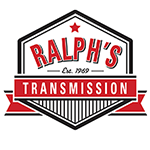TRANSMISSION FLUID DISCOLORED? IT COULD BE A SIGN OF A BIGGER PROBLEM.
.jpg)
Most people know how to check their engine oil with the dipstick under the hood. However, not everybody realizes that there is a separate dipstick specifically to check your transmission fluid. You may have to look a little harder for it or consult your owner’s manual. Once you locate it, though, it’s really easy to check your fluid level and quality anytime you want.
What to Look for
When you are self-checking your transmission fluid, there are a few things you will want to look at:
Level—Like your engine oil dipstick, your transmission fluid dipstick will have lines on it to let you know if the fluid it as sufficient levels. You never want the level to low or too high.
Color—Most transmission fluids are bright red and very translucent. If the color is dark, that could be a sign of a bigger problem or it may just be time for a standard transmission service. If it is very light and almost clear, then that’s not a good sign either. That may mean water has seeped into the transmission pan and that’s very bad for your system.
Texture—It’s hard to describe the ideal density and viscosity of transmission fluid, but it really is one of those “you’ll know it when you see it” kind of situations. If it seems too thick and sticky or too thin and watery, you will want to have your transmission looked at by a professional.
Smell—One other way to tell if you might have transmission fluid issues is the smell. Transmission fluid generally has kind of a sweet syrupy smell (please do not taste it, though). If it smells burned, especially if the color is dark and the viscosity are thick, then it’s definitely time to have your transmission inspected and serviced soon.
Why You Need Healthy Transmission Fluid
You want your transmission to have the proper amount of healthy fluid, which provides important lubricating properties throughout the system. If the fluid is too low or not of good quality, parts will start rubbing and grinding together dangerously. This can cause components to seize up and metal shavings to flow through the lines, either of which can lead to major transmission damage. Oftentimes, the biggest transmission issues are caused by someone neglecting to have their transmission serviced when it’s due. A standard transmission service will include a basic inspection, replacement of the transmission filter, cleaning of the transmission pan and replacement of the transmission fluid. In some cases, a full transmission fluid flush may be recommended if the situation is more dire. That, of course, is a more complicated process.
Your Central Valley Transmission Service Experts
For all your transmission inspection, fluid service, repair and maintenance needs in the Central Valley, count on Modesto’s own Ralph’s Transmission. We’re here to help keep your car on the road and keep your transmission running its best for many years to come. Call Ralph’s today at 209.526.1909 or schedule your next service appointment online.
Contact Us
Recent Posts
The Ralph’s Transmission Diagnostic Process
When a customer comes into Ralph’s Transmission for a free initial transmission inspection, we use a three-phase diagnostics process (sometimes four, if necessary). Our process is designed to uncover the exact source of any problems….
How to Choose a Transmission Shop
When it comes to your vehicle’s transmission repair needs, selecting the right transmission shop is crucial for ensuring quality service and peace of mind. At Ralph’s Transmission in Modesto, CA, we understand the importance of…
Four Ways to Increase Your Fleet’s Efficiency
Ralph’s Transmission is your go-to Central Valley transmission repair expert. Our Modesto, CA team is dedicated to providing top-notch transmission maintenance and custom transmission rebuilds, all backed by our 3 Year, 100,000 Mile Warranty. We…
